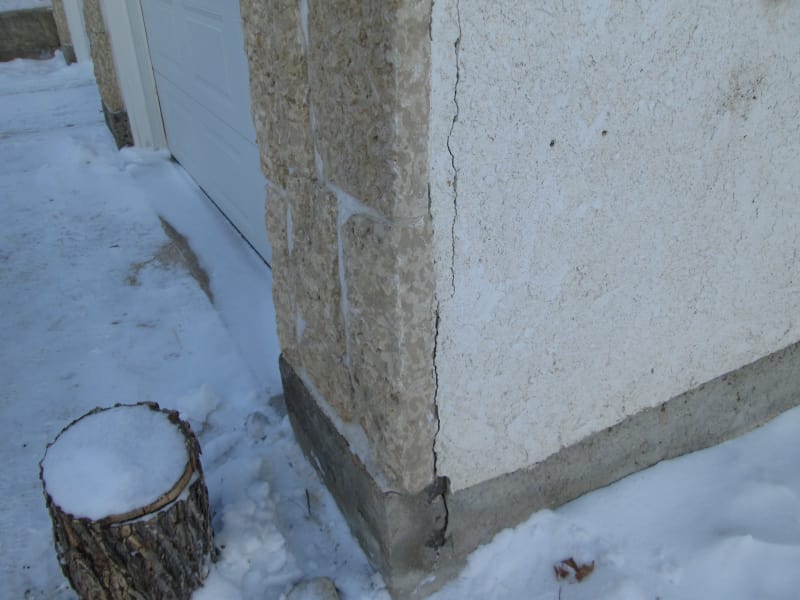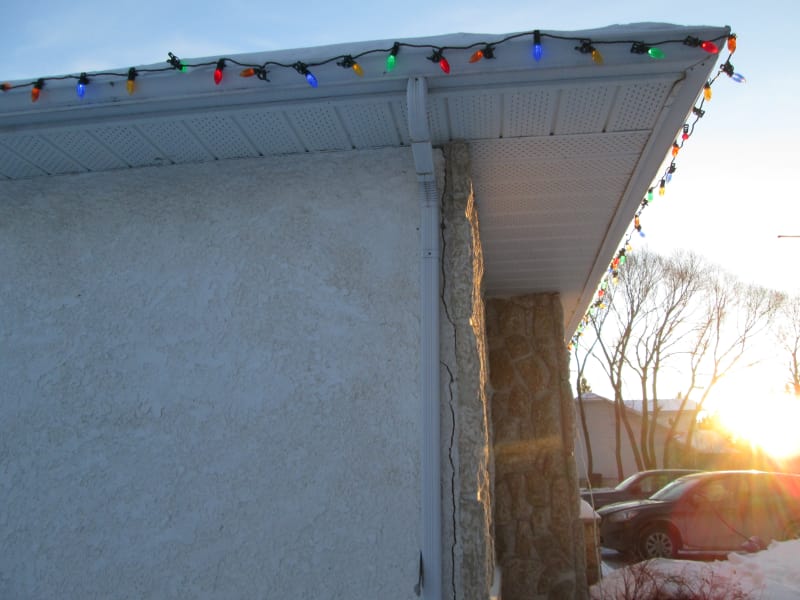Serhiy2
Civil/Environmental
- Nov 10, 2018
- 45
Good day,
I was doing foundation assessment and came across the cracks between stone veneer and stucco finish on the edges of the wall finished with veneer. Overall condition of veneer is fine with small cracks here and there and cracks where house and garage join (these ones are due to garage foundation moving seasonally - slab on grade foundation). First picture was taken at the attached garage wall corner. Second picture was taken at the house corner. It seems to be non-structural issue as the foundation below it is fine. You will notice that crack propagated into the grade slab on grade foundation but this is most likely because there is no bond break at the bottom of the veneer and grade beam so when veneer was detaching from the wall it also took some part of the slab with it. The only question I can't seem to find the answer is why that veneer is/was pulling away from the wall. Wall is facing north-west direction so I don't think it gets that hot to cause such significant differential material expansion although this could be the case. Also, I don't have building drawings so I don't know how that veneer attaches to the wall.
This crack is of not structural concern to me but I would still like to know what causes that veneer to detach. Would be happy to hear your thoughts. Thanks


I was doing foundation assessment and came across the cracks between stone veneer and stucco finish on the edges of the wall finished with veneer. Overall condition of veneer is fine with small cracks here and there and cracks where house and garage join (these ones are due to garage foundation moving seasonally - slab on grade foundation). First picture was taken at the attached garage wall corner. Second picture was taken at the house corner. It seems to be non-structural issue as the foundation below it is fine. You will notice that crack propagated into the grade slab on grade foundation but this is most likely because there is no bond break at the bottom of the veneer and grade beam so when veneer was detaching from the wall it also took some part of the slab with it. The only question I can't seem to find the answer is why that veneer is/was pulling away from the wall. Wall is facing north-west direction so I don't think it gets that hot to cause such significant differential material expansion although this could be the case. Also, I don't have building drawings so I don't know how that veneer attaches to the wall.
This crack is of not structural concern to me but I would still like to know what causes that veneer to detach. Would be happy to hear your thoughts. Thanks


